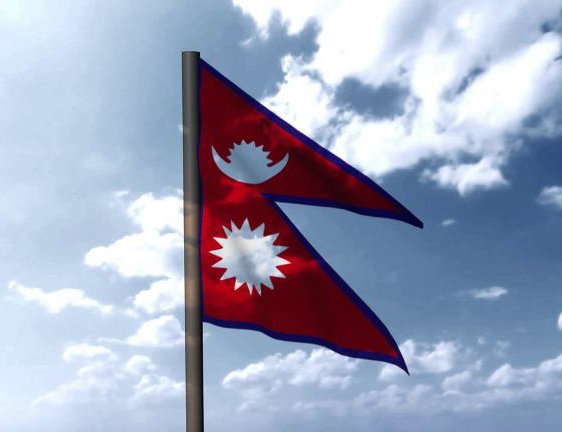
Type "end of globalization" into Google and you will get 51.3 million hits. It is not hard to see why: The United States has withdrawn from the Trans-Pacific Partnership, the Transatlantic Trade and Investment Partnership has gone on hold, the North American Free Trade Agreement has come under siege, and trade wars are brewing on every front. In its annual meetings at Davos, even the World Economic Forum — surely the most pro-globalizing group on Earth — has taken to asking what will replace globalization.
But not everyone got the memo. In Nepal, where I spent the first half of June, globalization is roaring ahead. To be sure, Nepal may seem like an odd place to measure globalization's health: In many ways it is literally the back of beyond — landlocked, mountainous (it boasts eight of the world's 10 highest peaks) and desperately poor. Calculated at purchasing power parity, the average Nepali earns just $8 per day; at nominal exchange rates, he or she makes barely $2. The pay rate translates into appalling squalor for much of the population. Walking through one village just outside Kathmandu, I encountered a woman sitting on the front step of her tin-roofed shack, in full view of everyone, delousing her daughter. Nepal produces a paltry 0.03 percent (nominal) or 0.06 percent (purchasing power parity) of the world's wealth, while the Transatlantic Trade and Investment Partnership, if it were to go ahead, would link 42-46 percent of global gross domestic product — and the agreement signed on July 17 between Japan and the European Union has already integrated almost one-third of the planet's economy. Who cares whether globalization is flourishing in Nepal? The country just doesn't matter.
Except, of course, that it does. Nepal and the many other countries like it matter very much. As the wealthy West retreats from globalization, the rising East is stepping in, hoovering up all the Nepals and remaking geopolitics in the process.
From Peripheral to Central
It is quite a shock to go from the United States, where so few seem willing to speak up for globalization, to Nepal, where almost everyone seems desperate for contact with the wider world. English is spoken almost everywhere; almost everyone seems to have relatives working overseas, especially in Dubai; and in the little town of Bandipur, people seemed astonished that I, as an Englishman, would not be sitting up with them until 1 a.m. to watch England play Tunisia in the World Cup.
There is no sign that the Nepali thirst for globalization will be quenched anytime soon. The current government calls itself Maoist, but the label seems to mean even less in Nepal than it does in China. (Several people assured me that "Maoist" just meant "not royalist.") Crony capitalism is flourishing and foreign direct investment is rushing in, more than doubling in 2017. Increasingly, though, the money and advice streaming into Nepal are not coming from the West. Sandwiched between China and India — which many analysts expect will be the world's two greatest economic and perhaps military powers before the end of the century — Nepal has suddenly become strategically important, and the geography that had once been a scourge is now an advantage.
Through almost the whole of its history, Nepal was anything but central. It marked the extreme edge of the South Asian world. To its north was nothing but the impassable Himalayas and isolated Tibet, but to its south was the crowded, rich, vibrant world of the Ganges plain. Not surprisingly, Indian culture has exerted a massive influence on Nepali culture since at least the third century B.C. The modern Nepali language and Devanagari script both grew from Indian Sanskrit roots, and 80 percent of the population is Hindu. For much of the time from the fourth century A.D. on, Nepal's princes were clients of various Indian rulers. At other times, however, Nepalis were able to use their position at the edge of South Asian civilization to make their own contributions. Buddhism began in Nepal in the fifth century B.C. before spreading to India and then China; between the 12th and the 16th centuries, Nepal's medieval Malla kingdoms were often among the most powerful Hindu states in existence at a time when the Islamic Sultans of Delhi dominated northern India; and in the 18th century, as India's mighty Muslim Mughal Empire disintegrated, the Gorkha Kingdom united the whole of Nepal (most of its spectacular stupas and intricately carved palaces date to this period).
The real strategic watershed in Nepal's history came at the end of the 18th century, but it was not the result of the British conquest of India. From a Nepali perspective, the event did not make much geostrategic difference. The East India Company was effectively nothing more than a new Indian dynasty, albeit one with a particularly strong army, aggressive merchants and intrusive culture (Nepalis still drive on the left). The real difference was the arrival of a large Chinese army in Tibet in 1792 to push out Nepali interlopers. Nepal had occasionally had powerful northern neighbors in earlier eras, such as the eighth-century Tibetan Empire or the Mongols in the 13th century. China's involvement with this distant region would wax and wane over the next 150 years, as governments in Beijing lurched from crisis to crisis. But 1792 nevertheless marked the beginning of a profound geostrategic shift for Nepal, whose position gradually changed from being at the periphery of a South Asian system to being in the middle of an Indo-Chinese one.
Putting Nepal on the Map
Chinese interest in the region deepened after Mao Zedong annexed Tibet in 1950, and has intensified still more since the 1990s, thanks to China's "Peaceful Rise" as an economic and increasingly a military power. China's economy depends on importing energy and exporting goods, but the "First Island Chain" of American allies dominates the all-important sea lanes across the South and East China seas. One potential solution to this major strategic problem is to confront the United States directly by building artificial islands in the South China Sea and peeling away U.S. allies. Another, subtler solution is to outflank the First Island Chain by winning access to ports on the Indian Ocean and Mediterranean Sea. Beijing has been exploring both options in parallel over the past decade.
According to some estimates, China's Belt and Road Initiative, announced in 2013, will invest $9 trillion in infrastructure linking East Asia to the Indian Ocean and Eastern Europe over the coming decade. Much of the funding will come from the Asian Infrastructure Investment Bank, also announced in 2013, in which China controls 26 percent of voting rights. In his recent book The Return of Marco Polo's World, former Stratfor contributor Robert Kaplan suggests that the Belt and Road Initiative could potentially recreate in the 21st century the 13th-century land-based Sinocentric trade pattern, challenging and perhaps even replacing the maritime networks built by Western Europeans and Americans during the last 500 years.
Among its many other tendrils, the Belt and Road Initiative is pushing Chinese investment into Nepal. As I was leaving Kathmandu in June, the Chinese and Nepali governments signed a memorandum of understanding on a new rail network to bring Chinese trains directly to Nepal's capital. A separate agreement announced the creation of a power grid to bring Chinese electricity to Nepal and address the inadequate generating capacity that regularly leaves even Kathmandu in without power for hours at a time.
As a Nepali guide told me, "The Indians promise, but the Chinese pay."
Nepal's need for infrastructure investment is staggering, not least because of a magnitude 7.8 earthquake that killed nearly 8,000 people (including 21 in an avalanche on Mount Everest) and left much of the Kathmandu Valley in ruins in April 2015. Even before the disaster, Nepal already had some of the most dangerous airports on earth, and, although I have plenty of experience driving around in poor countries, I was dumbstruck by what counted as a major road between Kathmandu and the provincial town of Nuwakot. Even under the best conditions, long stretches are passable only for vehicles with four-wheel drive; when the monsoon comes — as it did just after we left — nothing can move at all. Nor is driving much better in Kathmandu itself, where, despite the presence of quite a few paved roads, the vehicular anarchy defies description. I got off lightly: In my two weeks in Nepal, the cars I was in hit only one other car and one pedestrian.
But change is coming. No street scene in Nepal today is complete without mountains of bricks, sand and bags of cement. Most of the construction we saw was still being done manually by gangs of men, women and children wielding shovels and wheelbarrows, but just a few kilometers outside the medium-sized city of Pokhara, we found ourselves hiking through the middle of a parking lot crowded with trucks and backhoes — and signage in Chinese. As a Nepali guide told me, "The Indians promise, but the Chinese pay."
A Change of Scene
Globalization is not dead. It has just changed its address, and it is going ahead — fast, furious and messy — in the foothills of the Himalayas. Certainly, there are limits to what globalization can do for Nepal. At a certain level of abstraction, Nepal's geostrategic story has something in common with that of Korea, which also spent millennia as a periphery to a single great power (in Korea's case, China) and then found itself between two powers (first China and Japan, then China and the United States). Korea profited mightily from playing these powers off each other, and Nepal might do so too with China and India. Kathmandu, however, is not about to turn into Seoul — or into Taipei, Hong Kong or Singapore. Not even the return of Marco Polo's world can completely cancel out the presence of mountains and the absence of the sea.
In addition to facing geographic constraints, Nepal will find that globalization is a mixed bag. It has already destroyed many aspects of traditional life, creating losers as well as winners, and all the signs suggest that the unevenness will become still more pronounced. Those who can learn English, get their guesthouses into Western guidebooks, move to Kathmandu or even study overseas will inherit the world; those who cannot will be left behind. Yet Nepalis have little hesitation in embracing globalization, because the alternative to exploiting their newly central position in Asia's economic expansion is for investment and opportunity to go elsewhere, leaving everyone in Nepal behind.
The rich West could learn a lot from poor Nepal. When Indian investors failed to follow through on promises, Chinese investors stepped in instead. By most estimates, had the United States joined the Trans-Pacific Partnership, it would have gained well over 100,000 new full-time jobs by 2030 and added perhaps $100 billion to American workers' incomes. Like every deal ever made, including those in Nepal, the move would have had costs as well as benefits; some sectors of the American economy would have gained more than others, and a few might have been wiped out altogether by stiffer competition. But by withdrawing, the United States did not just leave billions of dollars on the table. It also reduced the gains available to the pact's 11 other signatories, and, in the words of the Congressional Research Service, "could, in effect, allow China to shape regional rules of commerce and diplomacy through its own trade and investment initiatives."
Globalization is anything but dead. By trying to shield itself from its downsides, the West is only surrendering its global dominance to the rising East.
Courtesy: stratfor.com. This article first appeared in startfor.com













